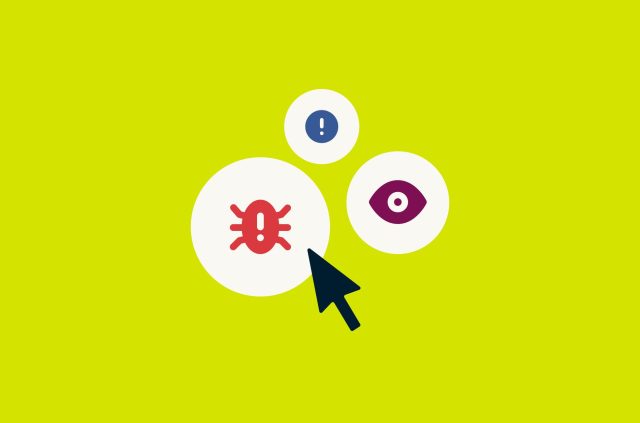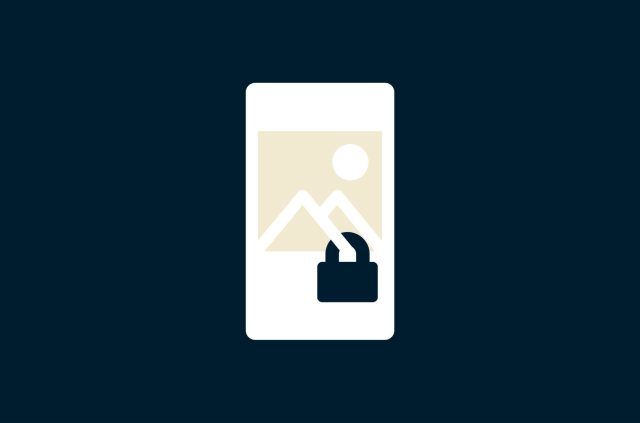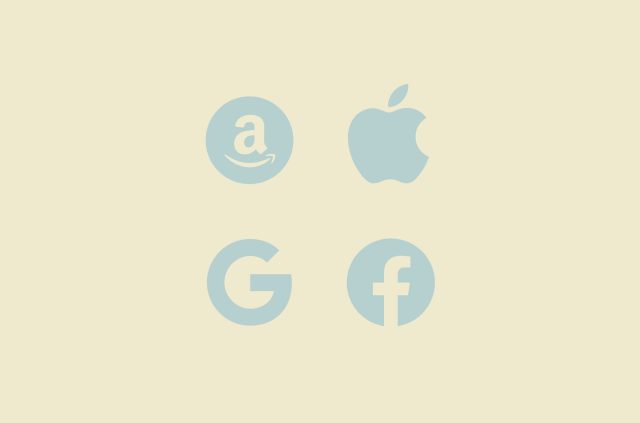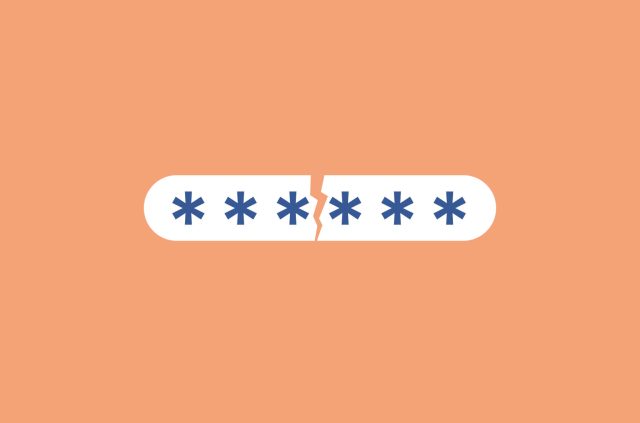Instagram phishing: How to stay safe from scams


For many of us, using Instagram is part of daily life—sharing our travels, keeping up with the news cycle, curating beautiful interiors, or following influencers and celebs. For some, it’s also crucial to their work, whether as a small business owner or running social media for a big company. However you use Instagram, it’s essential to understand the risks and know what to look out for—there are scammers aplenty.
Understanding how Instagram phishing works and knowing how to spot scams can help you protect your Instagram account and personal data. Here’s everything you need to know about Instagram phishing and how to stay safe from it.
What is Instagram phishing?
Instagram phishing refers to deceptive tactics used by scammers to trick users into giving up their login credentials, personal information, or financial details. Hackers impersonate Instagram or trusted sources to lure victims into clicking fake links, entering their passwords on counterfeit login pages, or downloading malicious files. Once they gain access to an account, they may lock out the original owner, steal personal data, or use the account for further scams.
Read more about Instagram hacking and security.
How hackers use phishing to steal accounts
Hackers deploy several phishing tactics to steal Instagram accounts, including:
- Fake login pages: Users receive emails or messages directing them to a page that looks identical to Instagram’s login page. When they enter their credentials, hackers collect them.
- Fake DMs from "Instagram Support": Scammers pose as Instagram representatives, claiming there's an urgent security issue that requires immediate action.
- Compromised links: Hackers send DMs containing malicious links, which, when clicked on can lead to malware installation or credential theft.
- Social engineering: Attackers use psychological tricks to manipulate users into giving up their information voluntarily.
Read more on how to prevent phishing attacks.
Why do people phish Instagram accounts?
Phishers primarily seek financial gain, and a compromised Instagram account can be extremely valuable. Here’s what cybercriminals typically do with hacked accounts:
- Sell stolen accounts: Accounts, especially those with a large following, can be sold on the dark web to scammers who use them for further fraud.
- Exploit personal data: Hacked accounts may contain personal information, which criminals use to open fraudulent accounts or commit identity theft.
- Defraud friends and followers: Scammers use the hacked account to send messages to friends and followers, pretending to be the original owner and requesting money or sensitive information.
- Spread scams and malware: Once in control of an account, cybercriminals can post phishing links or distribute malware, increasing their reach and targeting even more victims.
How to recognize Instagram phishing attacks
Instagram phishing scams often come disguised as official messages from Instagram or well-known brands. Knowing the warning signs can help you avoid falling victim.
Common signs of an Instagram phishing scam
- Unexpected messages: If you receive an unsolicited DM or email asking for your login details, be skeptical.
- Urgency and fear tactics: Scammers often claim your account will be suspended unless you act immediately.
- Suspicious links: Hover over links before clicking or press and hold on your mobile device, to see if they lead to Instagram’s official domain (instagram.com).
- Poor grammar and formatting: Many phishing messages contain spelling errors and awkward phrasing.
Is security@mail.instagram.com a phishing scam?
While security@mail.instagram.com is an official Instagram email address, cybercriminals can spoof addresses to make phishing attempts appear legitimate. Always verify the authenticity of an email by checking Instagram’s official security notifications inside the app.
How to spot fake Instagram accounts
Some of the common giveaways of fake Instagram accounts include:
- Low-quality profile pictures and bios
- Few posts but thousands of followers
- DMs requesting money, login details, or personal info
How Instagram phishing works
The psychology behind phishing attacks
Phishing relies on manipulating human emotions and behaviors to trick users into divulging sensitive information. Cybercriminals use psychological tactics such as:
- Fear and urgency: Messages claiming that your account will be suspended unless you act immediately can push users into acting without thinking.
- Trust in authority: Scammers often impersonate Instagram support, influencers, or brands to make their requests seem legitimate.
- Curiosity and temptation: Offers of free giveaways, prize money, or exclusive content can lure victims into clicking malicious links.
- Social proof: Seeing other users engage with a scam (such as fake comments or testimonials) can make it appear more believable.
Most common phishing methods on Instagram
Phishing scams on Instagram come in many forms, but some methods are more prevalent than others. Here are the most common ways scammers attempt to deceive users:
The impersonator: You get a DM or email supposedly from Instagram or Meta (Instagram’s parent company), warning of suspicious activity or some type of usage violation. The message often has a link to “verify” your account or update your information. Remember that banks and other official institutions never use social media to collect their clients’ sensitive and valuable data.
Copyright infringement phishing messages: They’ll claim you posted something that infringes on someone’s copyright and your account has been restricted. The message pressures you to click a link to appeal the decision, which takes you to phishing pages where you’re asked to enter your account information and other details.
Fake login alerts: The messages claim that you need to log in due to a security issue or to avoid account suspension. However, the provided link leads to a fraudulent login page designed to steal your login details.
Fake follower growth or account verification offers: The scammers will promise to help you increase your follower count or verify your Instagram account for a fee, asking for personal information and/or payment details under the false pretense of speeding up the verification process or getting more followers.
Prize, gift, and giveaway announcements: You receive notifications of winning a contest or being selected for a gift, only to be asked for a login, payment, or other personal information, or to complete other actions to claim your supposed prize.
The fake friend: You receive a DM from a seemingly familiar account, maybe even a clone account of someone you follow asking for help or offering something.
Blackmail: Phishers might threaten to expose your private photos or messages if you don’t comply with their demands. This is a serious crime; don’t engage with the scammer, and report the incident to Instagram and the police.
High-profile Instagram accounts, celebrities accounts: Scammers create fake accounts to impersonate high-profile accounts or celebrities, then try to trick you into giving them personal information or money. They might even hack a celebrity’s account to utilize their platform to carry out phishing attacks.
Shortened links in the account’s bio: Scammers often use shortened links in their bios. Clicking them might take you to fake surveys designed to steal your login details. These surveys often disguise themselves as harmless verifications or promises of exclusive offers.
Check if your data has been exposed using our data leak lookup tool.
Why hackers target Instagram users
Instagram is an attractive target for cybercriminals due to its vast user base, influencer economy, and business integrations. It’s easy to cast a very wide net, increasing their odds of success. Stolen accounts can then be used for financial fraud, personal data exploitation, and spreading scams.
What are the most common Instagram phishing scams?
Instagram users face a variety of scams, each designed to steal login credentials, financial information, or personal data. Below are some of the most frequent phishing scams that users should be aware of:
Fake login pages and reset password emails
These scams involve emails or messages that appear to be from Instagram, urging users to log in to secure their accounts or reset their passwords. The links lead to fake websites designed to capture login credentials. Once a hacker has this information, they can lock users out of their accounts.
"Verified badge" phishing scams
Scammers pretend to be Instagram employees offering users a ‘verified’ badge. They ask for login credentials or request a "processing fee" for verification. In reality, Instagram never charges for verification, and providing account information to these scammers can result in account takeovers.
Fake giveaways and lottery scams
Cybercriminals impersonate influencers or well-known brands, claiming that users have won a prize. To "claim" the reward, victims are asked to enter their login credentials or payment details. These scams are designed to steal personal information or trick users into making fraudulent transactions.
DM scams posing as Instagram support
Hackers send direct messages pretending to be from Instagram's support team. They claim that the user's account is at risk and request login information to "secure" it. Instagram will never ask for sensitive account details via direct message, making this an easy-to-spot scam.
What to do if you’ve been phished on Instagram
Report the scam to Instagram
- Go to Settings > Help > Report a Problem and provide details about the phishing attempt.
Secure your account (change password, enable 2FA, revoke access)
- Change your password immediately.
- Enable two-factor authentication (2FA) for extra security.
- Revoke access to suspicious third-party apps connected to your account.
Check for financial fraud (contact bank if needed)
- If you provided payment information, contact your bank and monitor transactions for unauthorized activity.
How to avoid being phished on Instagram
By integrating some basic practices into your daily use of Instagram (and other social media platforms), you can significantly reduce the risk of falling victim to phishing scams. Awareness, skepticism, and proactive security measures are key!
Here are our practical tips to stay safe and avoid falling victim to Instagram phishing messages:
- Never enter personal information prompted by someone else: While filling out online forms is a part of life, they should be tasks initiated by you, not by someone sending you a link. For example, if you want to buy something on Amazon, you’d log in to your account with a username and password, then check out by entering your credit card number. However, you should never enter this same information into an online form sent by someone else. By the same token, never reveal your personal details in online conversations to anyone, especially strangers.
- Don’t click suspicious links or attachments: Be extremely cautious when someone sends you anything over Instagram. Look out for urgent or threatening language. Examine the content for poor spelling and grammar mistakes. Only follow links or open attachments if it’s sent by someone you know.
- Inspect URLs: Before entering anything into a website, look out for misspellings, extra characters, or subtle character changes (for instance, a capital i and a lowercase L look extremely similar).
- Preview URLs: Before following any link, look at a preview of the site by hovering your cursor over it on desktop or long-tapping on mobile devices. A preview of the actual URL will appear in the bottom corner of your browser window. Does the URL match what’s displayed in the message?
- Go to the source in a browser: If a message claims to be from Instagram or another brand, log in to the official app or website directly (don’t use links in the message) and check for any notifications or announcements there.
- Manage privacy settings: By making your Instagram account private, you can limit access to just friends and family. This would reduce the chances of someone sending you a phishing message.
- Enable two-factor authentication (2FA): Doing this minimizes your risks in the event that someone does successfully phish you for account information. It adds an extra layer of security by requiring a second form of verification beyond just the password. Enable 2FA on your Instagram app from the settings menu: Tap your profile picture in the bottom right corner > three horizontal lines > Accounts Centre/Security > Passwords and security > Two-factor authentication > Choose Instagram (if you also have other accounts like Facebook) > Choose your method for 2FA (such as authentication app, SMS text or WhatsApp).

Common mistakes to avoid while using Instagram
- Reusing passwords across multiple accounts.
- Clicking on unverified links.
- Sharing sensitive information publicly.
Can a VPN protect your Instagram account?
A VPN download can increase your privacy when you use Instagram by hiding your real IP address. This makes it harder for Instagram to tell where you are located.
However, a VPN won’t prevent someone from sending you a phishing link and it won’t block a website from you if it happens to be a phishing site.
Another benefit of using a VPN for Instagram is that it can help you access Instagram in countries where it is censored or in places like schools and offices where the Wi-Fi network blocks the app.
How to report phishing on Instagram
Report phishing attempts via Settings > Help > Report a Problem or forward phishing emails to phishing@instagram.com.
FAQ: Instagram phishing
Can Instagram phishing steal personal data?
Can Instagram phishing lead to identity theft?
How do I identify scammers on Instagram?
What happens if you click on a fake Instagram link?
What are the signs that my Instagram is hacked?
- Unauthorized login attempts: Instagram may notify you of login attempts from unfamiliar locations or devices.
- Changes to account details: Your email address, phone number, or password may have been altered without your consent.
- Unfamiliar posts or messages: Hackers may post spam content, share malicious links, or message your followers pretending to be you.
- Inability to log in: If you’re locked out of your account despite using the correct password, someone may have taken control.
- Suspicious activity notifications: Instagram may alert you to unusual behavior, such as multiple failed login attempts.
If you notice any of these signs, take immediate action by resetting your password, enabling two-factor authentication, and reporting the issue to Instagram.
Can you get your Instagram back after being phished?
Can Instagram’s two-factor authentication prevent phishing?
How long does it take to recover a phished Instagram account?
How to check if your Instagram data has been leaked?
Take the first step to protect yourself online. Try ExpressVPN risk-free.
Get ExpressVPN















